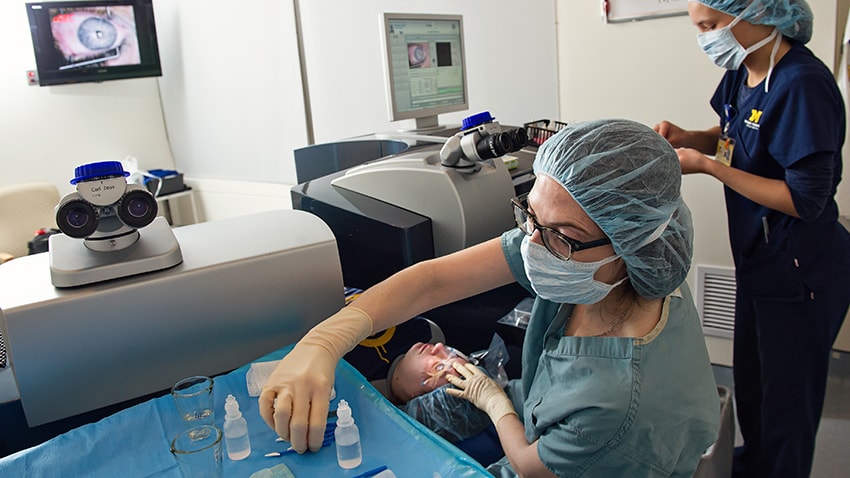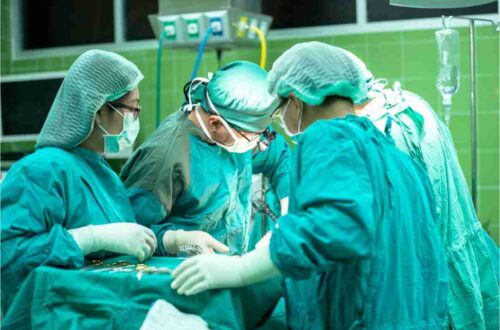
How To Prevent Pains After Cataract Eye Surgery
Cataract surgery treats severe eye conditions by reshaping your cornea to focus more light on the retina. The retina is the rare light-sensitive part of the eye that receives light and transfers images to the brain for complete interpretation.
Cataract surgery is a great alternative to eyeglasses or contact lenses. Many surgeons recommend cataract eye surgery because it is fast, safe, and requires lesser downtime. It is also a permanent solution for correcting refractive errors.
Cataract studies indicate that 96 per cent of cataract patients achieve satisfactory outcomes after making a full recovery (20/40 vision or better). The results of cataract eye surgery last a lifetime. Some people may experience a few vision issues years after the surgery, requiring enhancement.
Studies show that about 35 per cent of cataract clients may need enhancement after ten years. These issues may result from natural ageing, eye diseases, or trauma, but not cataract surgery.
Related: 6 Effective Vision Correction Alternatives To LASIK Eye Surgery

7 Ways to Reduce Pains after Cataract Eye Surgery
Here are the best seven tips to help you reduce or eliminate pains after cataract eye surgery:
1. Rest Your Eyes
After the procedure, avoid every activity that might cause eye strain. For example, do not watch TV, read, or use a computer or smartphone. Instead, you may need to rest your eyes for a long time. Most doctors will recommend that you sleep after the cataract eye surgery. Sleep helps reduce the pain and discomfort. Your eyes will also heal faster if you limit function.
2. Take Pain Medication as Needed
If you experience pain after surgery, take the pain medication only as prescribed by your surgeon. You can also buy the pain relievers they recommend.
3. Use Prescribed Eye Drops
Your doctor may prescribe antibiotics and eye drops after your cataract surgery. Antibiotics help prevent eye infections that may cause pain and prolong recovery. The lubricating eye drops will help prevent dry eyes and reduce pain and itchy sensation.
4. Wear a Hat and UV-protective Sunglasses Outdoors
For several days post-surgery, your eyes will be more sensitive, especially to light. Wear a hat with a brim or UV-protective sunglasses when you are outdoors. Hats help prevent your eyes from direct sunlight, preventing them from danger.
Dark UN-protective sunglasses shield your eyes from harmful UV rays and protect them from dust, dry air, and debris. Try to remain indoors as long as possible, especially on very bright sunny days.
5. Avoid Potential Dry Eye Situations
A dry eye is likely a source of recurrent pain for several weeks or months after the procedure. Avoid dry, dusty, or smoky places, which may trigger dry eye attacks. Lubricating eye drops will help you manage dry eye attacks.
6. Wear Cataract Eye Shields
After Cataract surgery, your doctor will provide you with protective eyewear. These goggles protect your eyes from unintentional rubbing or contact, especially while talking with friends or sleeping. Cataract eye shields are worn the entire day after surgery and at night only. However, instructions may differ depending on your health situation.
7. Attend Follow-Up consultations
Visiting your doctor for a checkup will ensure more successful healing. Constant visits will help him detect any issues before they worsen during these visits. They will also provide post-surgery advice and address any concerns.
What to Expect During LASIK
You will sit on a reclining chair if you’re undergoing traditional LASIK surgery. After a final eye examination, your surgeon will use a microkeratome to cut a part of your cornea. He will leave a hinge location to hold the tissue in place.
Your surgeon will fold the flap backwards to expose the inner corneal tissue. Then, your surgeon will use wavefront technology if you’re under IntraLase LASIK – or iLASIK. This newer version of LASIK surgery is computer-guided to map your eyes, create the flap, and reshape your cornea. They will treat this tissue with an excimer laser to give the cornea a new shape.
Unlike traditional LASIK, which uses a sharp blade, LASIK surgery uses an IntraLase laser to create the flap. The laser minimizes blade complications.
LASIK uses an excimer laser to reshape a patient’s cornea. After the laser portion of the treatment, your physician will reposition the flap and smoothen it out to remove all bubbles and folds. He will also prescribe pain medications and lubricating eye drops to ease flap-related discomfort.
The LASIK surgery lasts about 30 minutes or even less for both eyes.

What happens After LASIK?
After cataract eye surgery, your surgeon will prescribe some pain medications, and lubricating eye drops to ease discomfort. You must care for your eyes to avoid irritation, dislodging, or infection.
Your doctor will also provide post-operative instructions to help you hasten the healing process. Most patients develop clear vision after a day or two. However, it may take up to 2 to 3 months for your flap to naturally heal and your vision to stabilize.
You can resume usual activities such as driving and reading after about a week of healing but do so in moderation. Although LASIK involves minimal downtime, you may experience side effects after the procedure.
Some people report:
- Dry eyes
- Light sensitivity
- Gritty or itchy feeling in the eyes
- Mild discomfort
- Red eyes
- Glares and halos around lights
- Blurry vision
- Excess tearing
- Temporary vision loss
Most LASIK side effects are usual and will improve gradually. To avoid complications, follow your doctor’s instructions for a successful recovery.
Is Pain Common After Cataract Eye Surgery?
After a refractive vision correction, you may experience a little discomfort. The pain will automatically fade away as your eyes adjust and heal. You can use pain medication to ease your pain.
Some little discomfort is normal After cataract surgery and is part of the therapeutic process. You may also feel an itchy or gritty sensation in your eyes like a foreign object is stuck in them.
Finally
Although very rare, some patients report severe post-LASIK pain. Those severe pain may result from infection, flap dislocation, or other LASIK surgery complications. If you experience too much pain accompanied by tearing or vision changes after LASIK, contact your surgeon for professional help.



